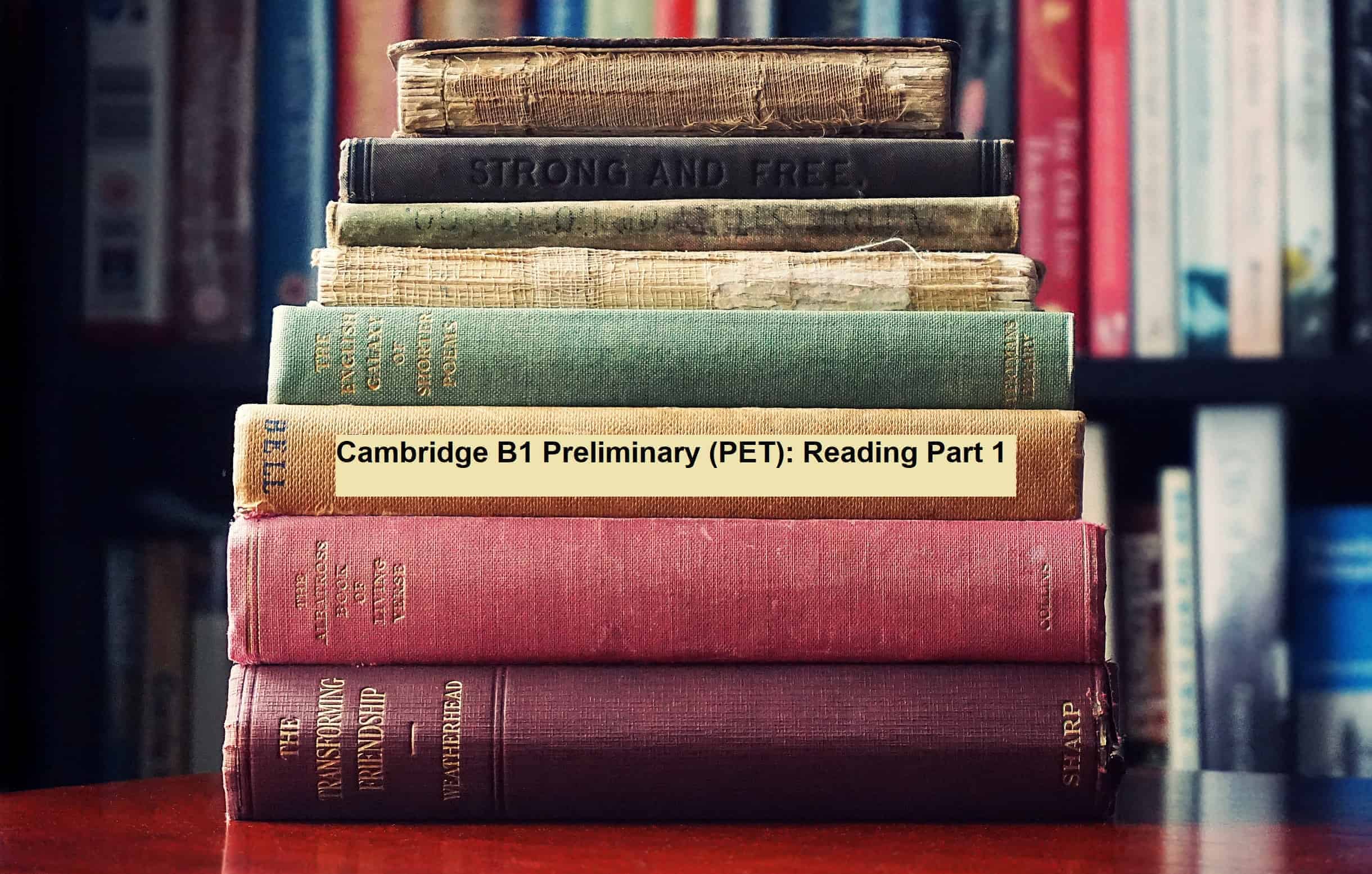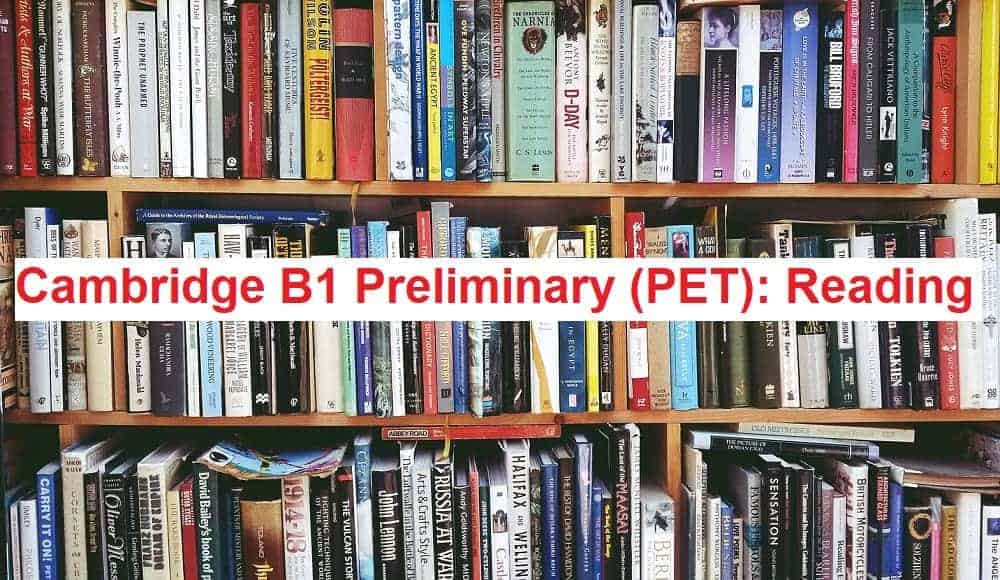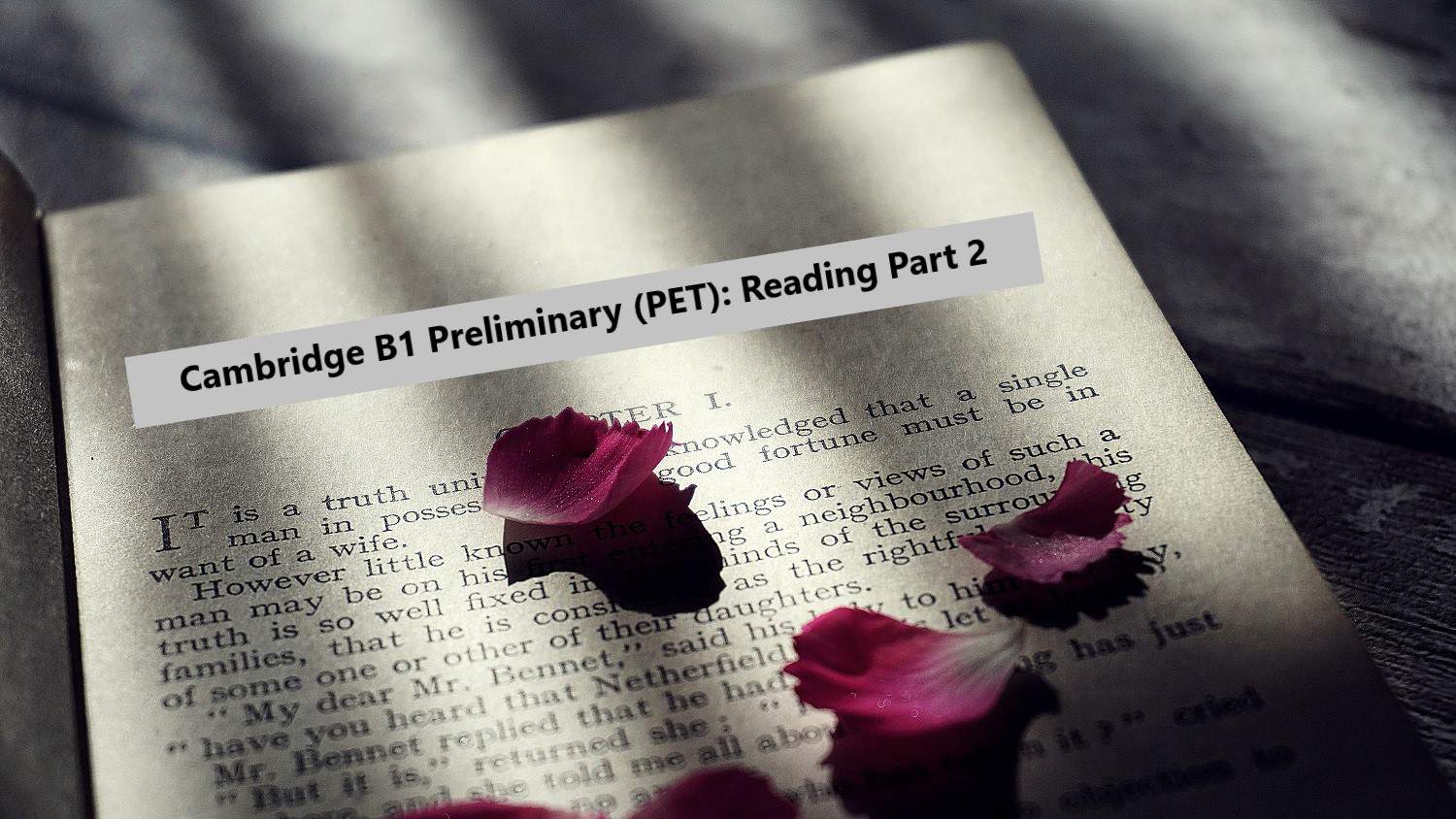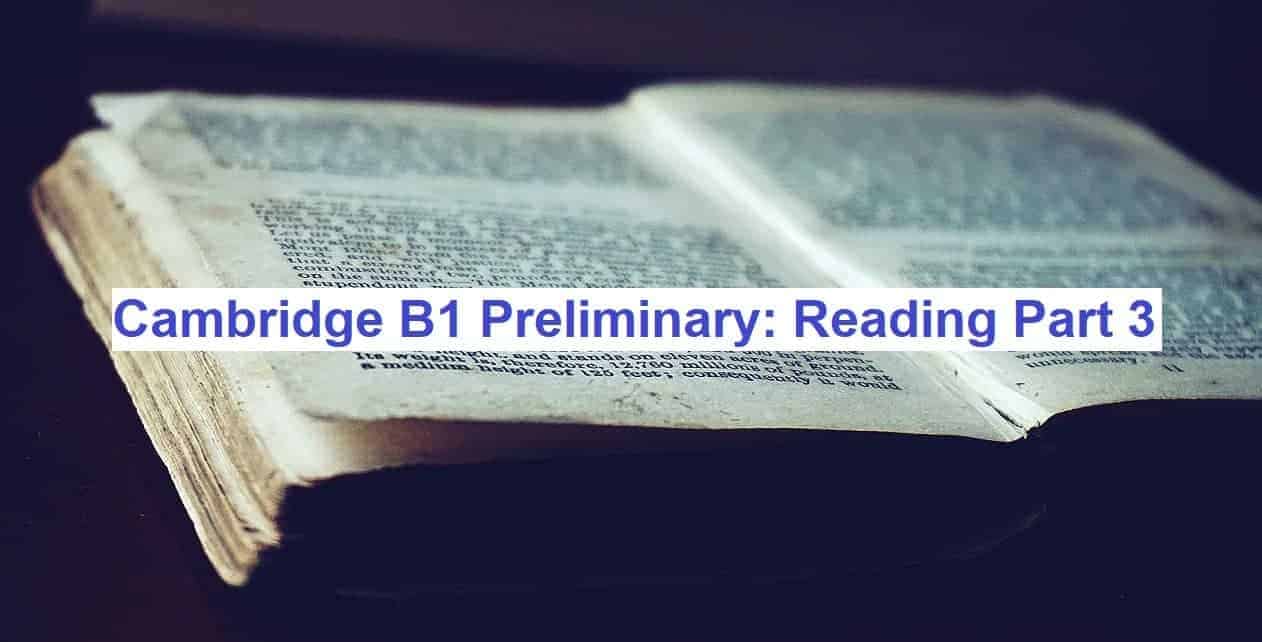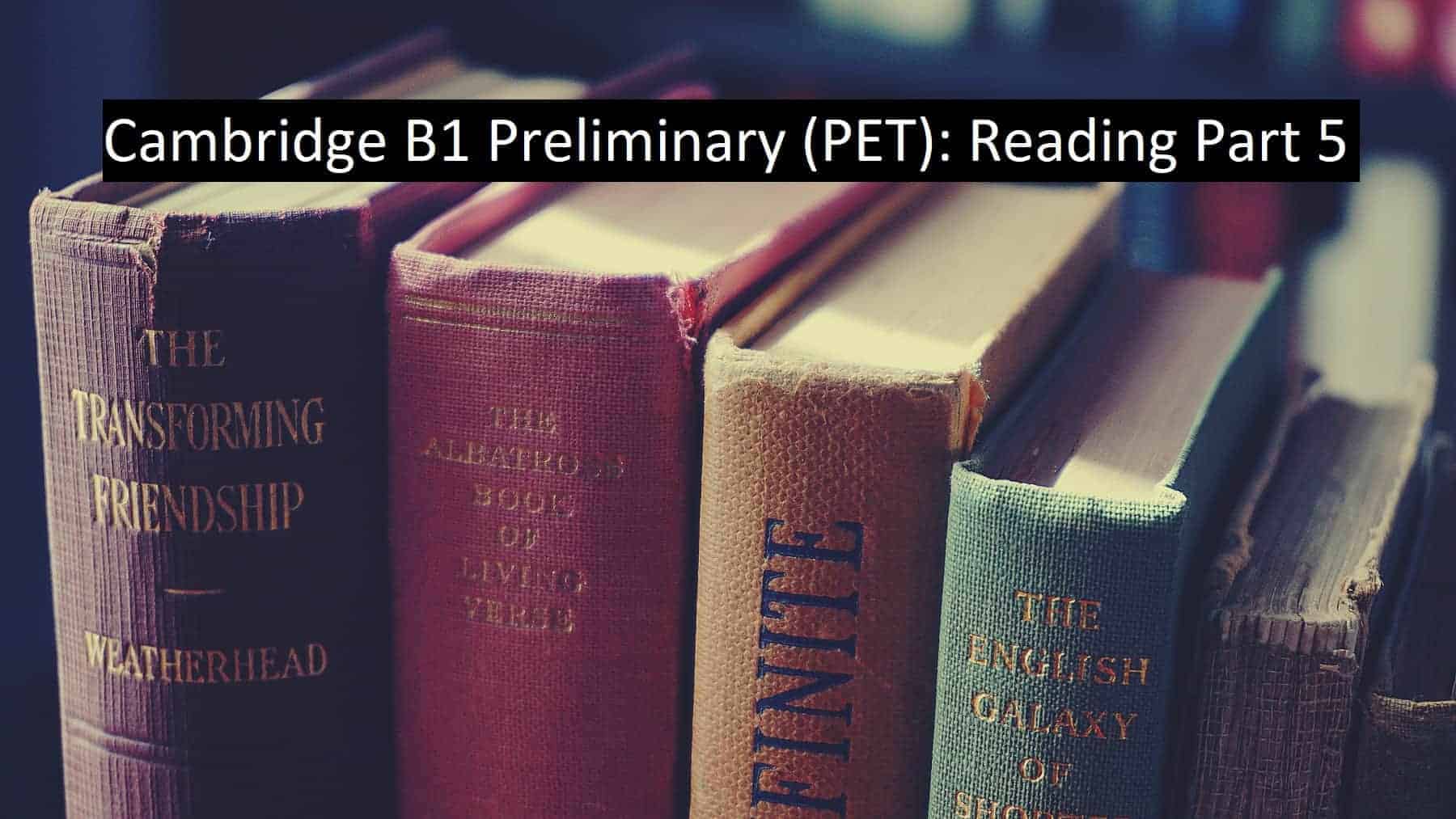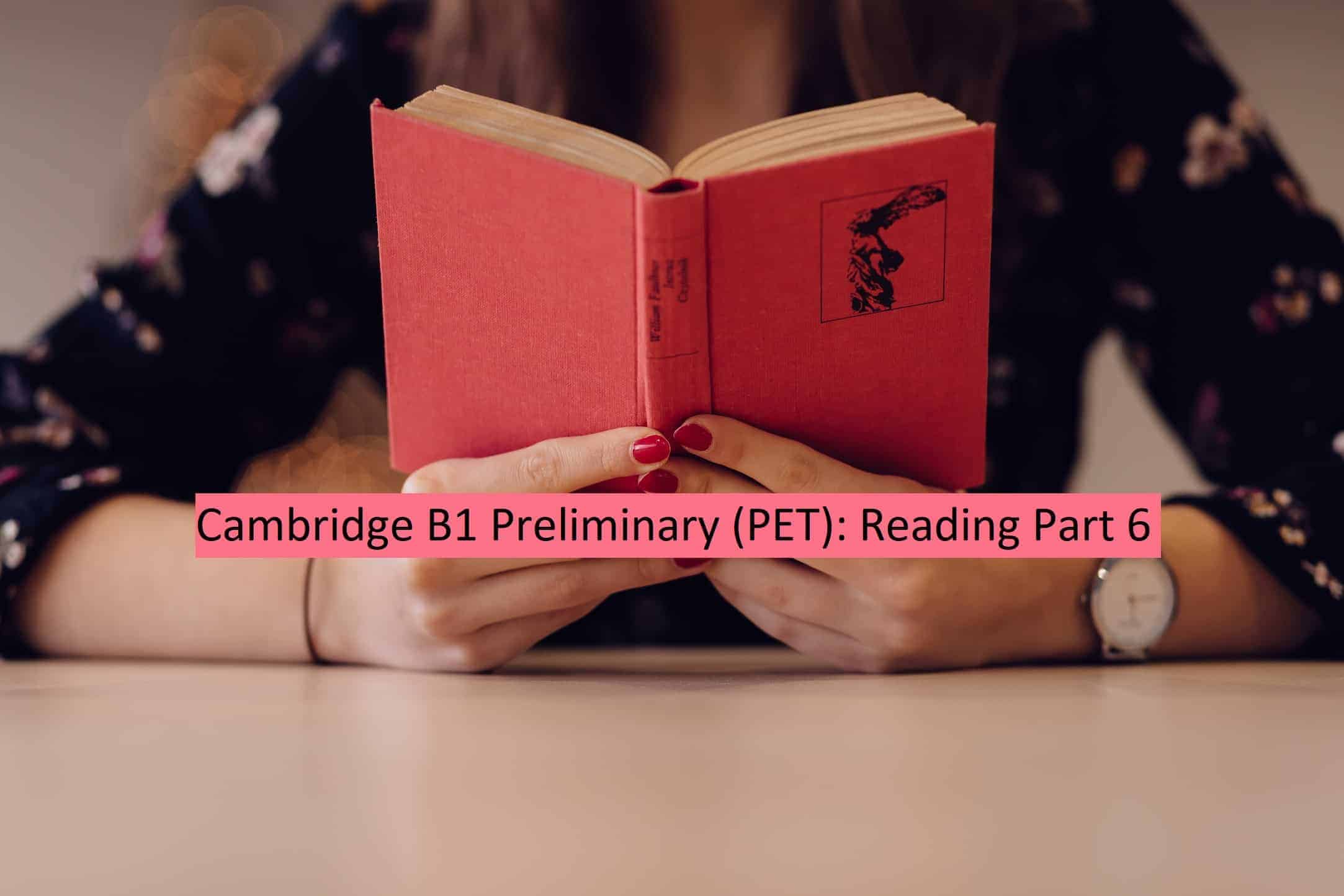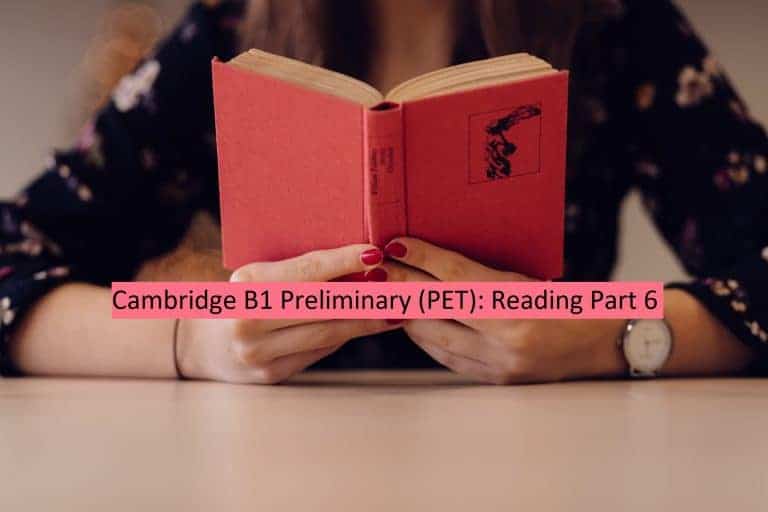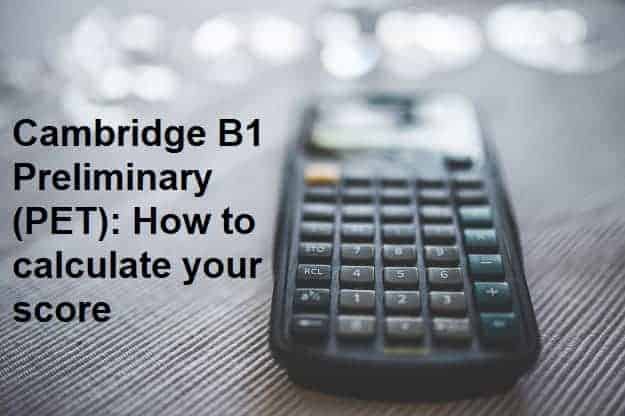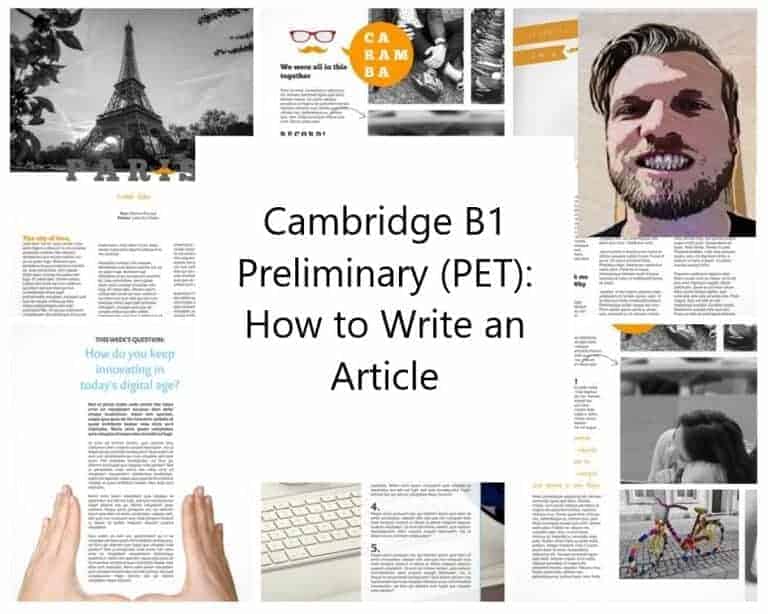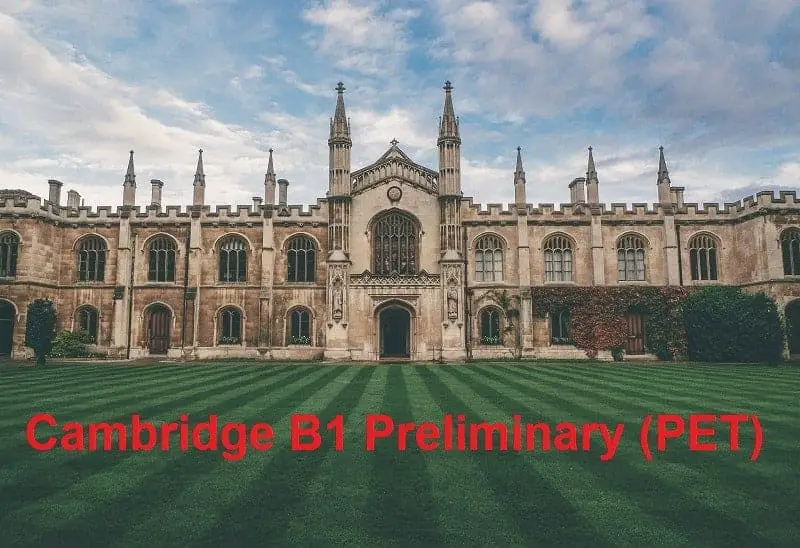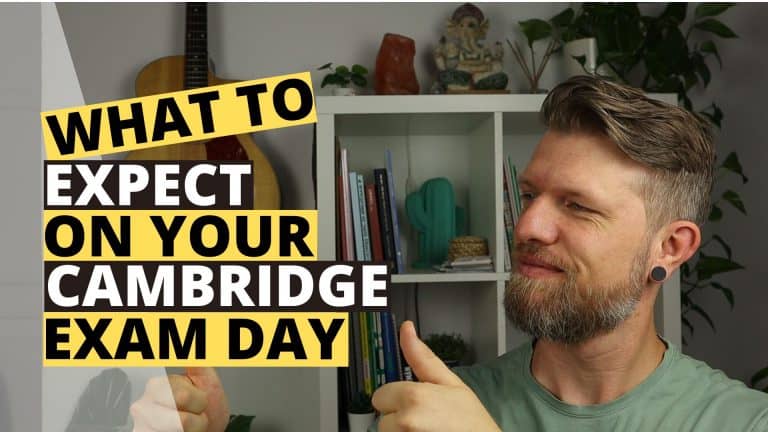Reading Part 1
In this article I’m going to show you all the best tips and tricks for Reading Part 1 of the Cambridge English B1 Preliminary exam. If you want to know more about PET in general, I recommend starting with my other post about everything you need to know about the PET exam.
However, if you look for specific information about Reading Part 1, you’re in the perfect place so let’s get started.
What do you have to do in Part 1?
3-option multiple matching. You get five short texts, for example notices or messages, which you might find in real life. For each text you have to choose the best option A, B or C.
In this part you are tested on your understanding of different types of short texts and this is a true reading task while, for example, Parts 5 and 6 are designed to test you grammar and/or vocabulary.

This is what a question in Reading Part 1 might look like. You can see that the text is really short and on the right are your three possible options A, B and C.
Your task is to decide which of the three options reflects the meaning of the text or which of them is a fully true statement. Once you’ve decided, you also have to transfer your answers onto a separate answer sheet that the examiner gives you at the beginning of the exam.
Of course, the Reading paper contains of six parts in total so if you want some more information about this whole part of the PET exam you can follow this link to find out more about B1 Preliminary Reading.
What is difficult about Part 1?
When we look at Reading Part 1, there is just one main difficulty. First, I’m going to show you what this problem is and then, in the following part, we’re going to look at strategies that will help you to avoid it in the future.
Read the texts and the answers carefully
Cambridge English exams are not easy and one of the biggest reasons for that is the confusing answers that you get in the test. In fact, the questions and answers are designed to make it more difficult for you.
Very often you will find that some of the possible answers are almost correct, but a little twist with the grammar or just one word that makes the whole sentence negative can turn a correct answer into an incorrect one.

In the example above you can see that all three possible answers talk about the age of the people who can enter the competition to win a car. In the text on the left it says that you have to be at least 18 years old.
You have to be very careful and find the answer that means the same as the text. ‘At least 18 years old’ means 18 years or older so 18 is the minimum. Therefore, option B can’t be true because it talks about a maximum age. Also, option C says that you have to be exactly 18 years old, which isn’t what the text says either because you can be older than that. As a result, option A must be the correct answer.
I hope this example has shown you what can be difficult when you try to complete Reading Part 1. Now, let’s look at how to do it right.
Tips and strategies for Reading Part 1
In this section of my post you will find out a little bit more about the things you can do and the strategies you can use in order to be successful in Reading Part 1.
Underline the key words
We now know what the biggest problem is, but what is the best way to avoid it? In Reading Part 1, this is quite easy and straightforward. When you read the texts and the possible answers, make sure that you underline the most important words. In our example from before we would underline everything that is about the age of the people in the competition, so it would look like this:

This makes everything a lot easier for you because you can now focus on the important parts of the task and ignore everything else. You save time and you can work in a more relaxed way.
Follow a step-by-step process
One other thing that a lot of student ignore or simply forget is that you can go through the different tasks like through a cooking recipe. As I said above, you should always underline the most important words so you know exactly what to do.
Apart from that, however, you should always think about the next step and the step after that and so on. In Part 1 you want to underline the key words, then analyse what you have underlined and, finally, choose the correct answer either by eliminating the wrong options or by finding the correct one.
For the other parts in the Reading exam there are, of course, other step-by-step processes, but it is important for you to have something you can follow when you get nervous or are short on time.
General tips
There are a few things you can do to prepare in general for the Reading paper of the B1 Preliminary exam.
First of all, try to read things in English as often as possible. Even if you only have five or ten minutes every day on the bus to or from work or school, use it practise some reading. Read whatever you want: the news, stories, articles or anything else you enjoy.
You will become a faster reader, which can save you time in the test, and you will see a lot of grammatical structures and new vocabulary that you might see again when you take the exam.
Secondly, think about taking English classes to prepare yourself specifically for the exam. It can be very helpful to have a teacher who can give you feedback on your typical mistakes and things you already do well so you know what you have to improve what you should focus on when getting ready for PET. To find a good school near you have a look at my article about everything you need to know about B1 Preliminary.
Last but not least. think about your time management and the order in which you want to go through the different tasks in the exam. If you want to know more, you can follow the link to my post about the Reading paper in the PET test.
Lots of love,
Teacher Phill 🙂

